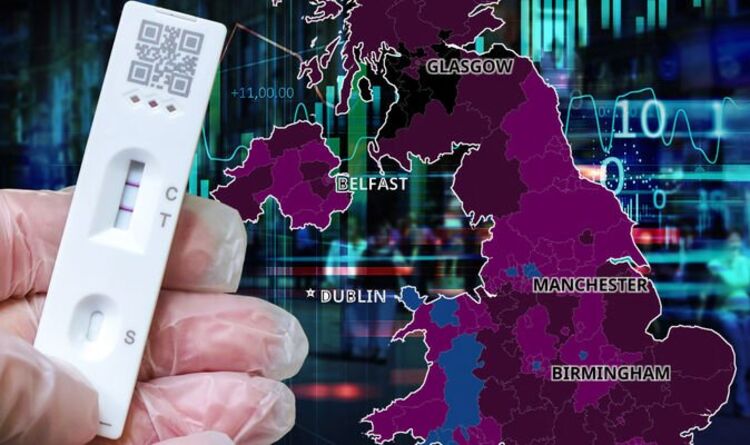
Long Covid: Dr Sara Kayat discusses impact on children
We use your sign-up to provide content in ways you’ve consented to and to improve our understanding of you. This may include adverts from us and 3rd parties based on our understanding. You can unsubscribe at any time. More info
The new plan for “living with Covid” assumed that infection levels were low enough to avoid significant loss of life caused in previous waves. But recent data shows the risk is creeping up again, just as the temporary provisions contained within the Coronavirus Act expire. As the Government loses the ability to impose all but a few of the act’s provisions, the country is blasting past its all-time Covid peak.
Cases have stacked up since the Government dropped England’s remaining mitigation measures in February.
Data posted on the Government’s Covid dashboard show the lowest totals in 2022 recorded on February 23, with 31,933 new infections.
Since then, they have steadily surged, compounded by the Government’s addition of reinfections into monitoring practices.
Less than a month after the lowest infection rate since 2021, officials recorded the highest. On March 21, UK cases amounted to 226,524, the most recorded since the pandemic started.


The countrywide rate for the last seven days is 612,084, and surveillance shows Omicron is behind the marked jump.
England has recorded the highest case rate, with more than 10 times those in other home nations.
Government surveillance teams have sequenced 2,031,601 Omicron cases in the UK.
English authorities have recorded more than half of these, with 1,640,486 in the home nation of 55.98 million people.
In England, the South West is leading the way with 71,070 cases and a rate of 1,255.8 per 100,000 population, followed closely behind by the South East with 96,514 and a rate of 1,047.1.

Other regions in England have lower rates than these two hotspots – but only just:
- East of England – 996
- East Midlands – 757.6
- North West – 690.9
- West Midlands – 658.7
- London – 648.8
- Yorkshire and the Humber – 634
- North East – 623.3
Scotland has the second most Omicron cases with 197,318, Northern Ireland the third with 97,896, and Wales last on 95,901.
However, of the top ten UK upper-tier local authority areas for Covid infection levels, Scotland – where the face mask mandate has not yet been scrapped – comes out on top:
- Na h-Eileanan Siar – 3,041.5
- East Ayrshire – 2,264.8
- North Ayrshire – 2,126.6
- South Ayrshire – 1,953.8
- Clackmannanshire – 1,922.4
- Highland – 1,899.9
- Inverclyde – 1,889.4
- Falkirk – 1,863.5
- Renfrewshire – 1,862.4
- East Lothian – 1,848

As cases rise, so too have hospital admissions and deaths caused by Covid.
Over the last seven days, 904 people have died of Covid, and the most recent complete data from March 24 shows 165 deaths up to 28 days after infection.
More than 10 times that number have been admitted to hospital, with 16,975 as of March 23, an increase of 19.5 percent.
The rising totals in these two areas could see rates cross the Government’s red lines.
Will the Government bring back Covid rules?
On March 14, Health Secretary Sajid Javid said hospitalisations (then 10,576) and rising case rates were “expected”.
He added that, with the UK now open and social mixing back, there was “nothing in the data” that was a “cause for concern”.
Mr Javid has not indicated at what point he would consider bringing back Covid measures.
Ministers have instead chosen to lean on vaccines to protect those most at risk of serious illness.
The Health Secretary revealed that vulnerable Britons can secure another two booster jabs, with the second “spring” dose available to book now.
He indicated a third booster and fifth jab overall would come further down the line in autumn.
Eligible groups include older adult care home residents, over-75s, and immunosuppressed people aged 12 and over.
Source: Read Full Article